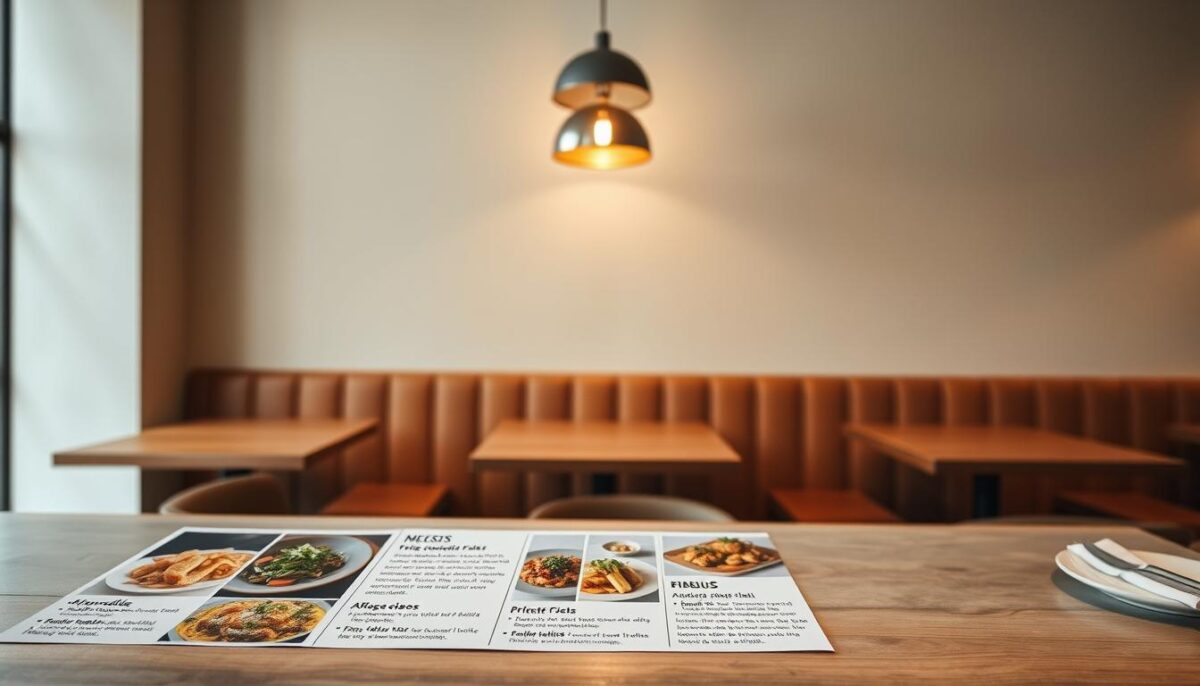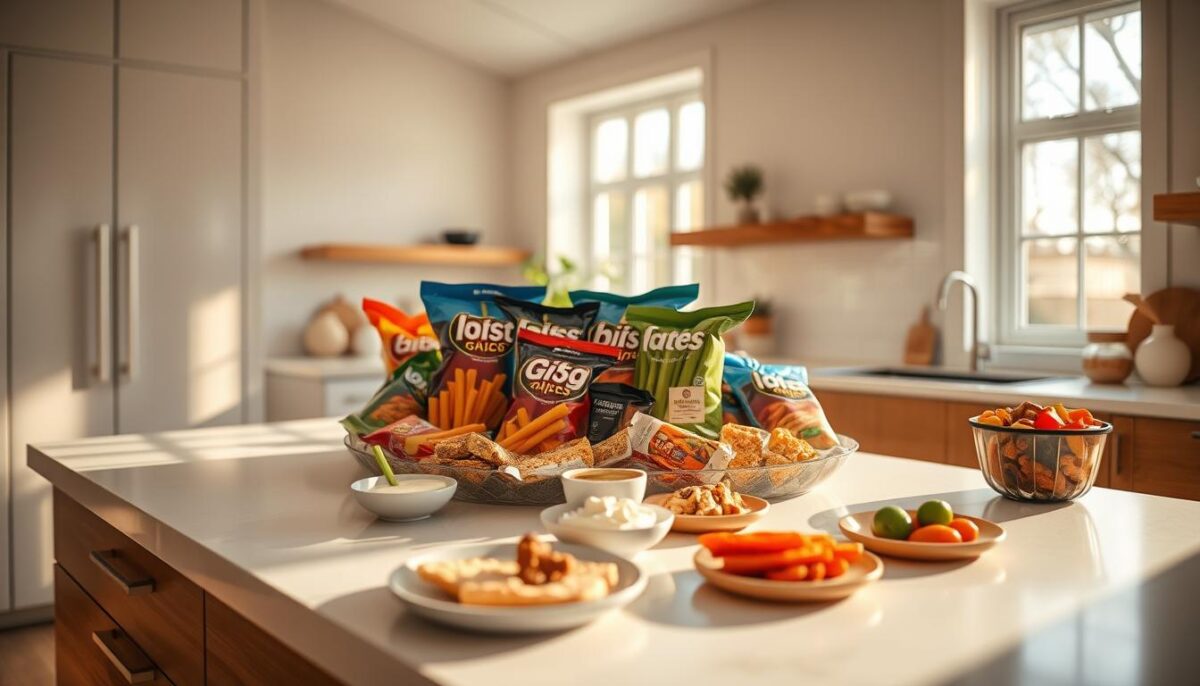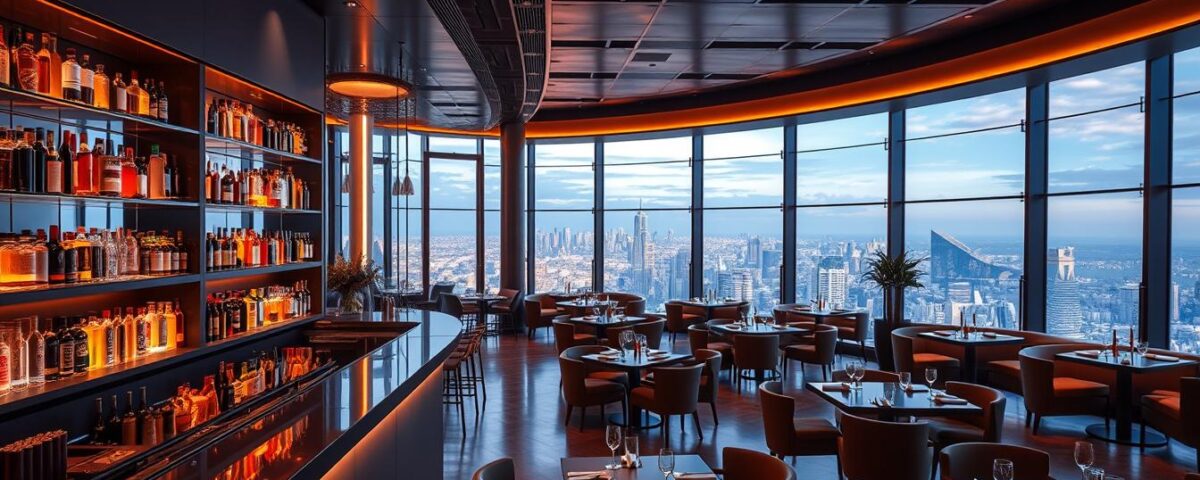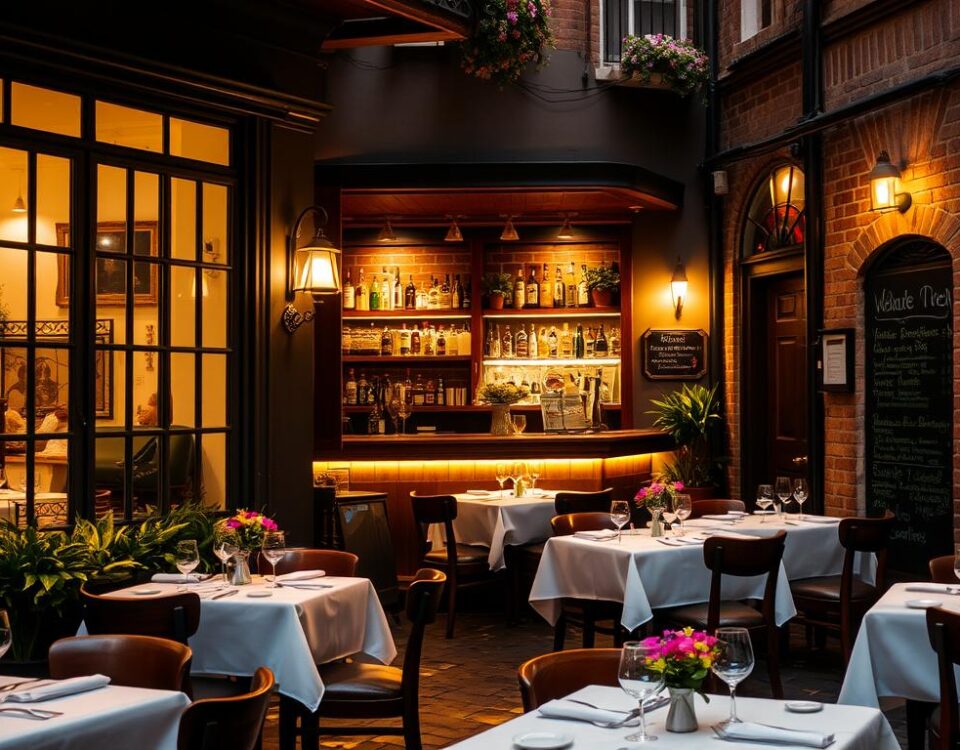
The One-Day Restaurant Website Setup Guide (No Code!)
August 28, 2025
5 Concept Mistakes That Hurt Your Restaurant’s Identity
August 29, 2025The restaurant industry is a dynamic landscape where consumer preferences are constantly shifting due to economic pressures, health concerns, and technological advancements. As a forward-thinking restaurant owner or manager, staying ahead of the curve is crucial for success.
Did you know that the food and beverage scene is expected to witness significant changes in the coming year? With new colors, flavors, and eating styles emerging, being the first to market with innovative concepts can give your restaurant a competitive edge. By understanding the upcoming trends, you can test new ideas, refine your offerings, and perfect execution before your competitors catch up.
As we dive into the emerging 2025 restaurant trends, I’ll explore how you can identify and implement these trends to stay ahead of the competition. What if you could capitalize on the latest trends before they become mainstream?
Key Takeaways
- Understand the emerging trends in the food and beverage industry for 2025.
- Identify opportunities to innovate and stay ahead of the competition.
- Learn how to implement new trends and refine your offerings.
- Discover expert predictions from industry leaders and research firms.
- Gain a competitive advantage by being the first to market with new concepts.
The Competitive Edge: Why Early Trend Adoption Matters
In the ever-changing landscape of the restaurant industry, being the first to adopt trends can give you a significant edge over your competitors. As consumers increasingly seek novelty, early adopters are poised to reap the benefits. According to Menu Matters’ survey, the overriding need state for 2025 is “just give me something new,” indicating a shift towards innovation and away from nostalgia.
The Financial Impact of Being First
Early trend adoption creates a significant financial advantage through increased customer visits, higher check averages, and premium pricing opportunities. Restaurants that identify and implement trends first often enjoy free publicity through social media and food blogs, reducing marketing costs while increasing visibility. This not only boosts revenue but also establishes the restaurant as a leader in the industry.
Building Brand Identity Through Innovation
Being an innovation leader helps establish a strong brand identity that differentiates your restaurant from competitors in a crowded market. By adopting trends early, restaurants can gain valuable customer feedback, refine their offerings, and create a more polished final product. This focus on innovation attracts consumers looking for novel experiences, driving loyalty and repeat business.
Top 2025 Restaurant Trends You Can’t Afford to Miss

Restaurant trends for 2025 are shaping up to be game-changers, with a focus on value, sustainability, and protein-centric menus. As consumers continue to evolve in their preferences, restaurants must adapt to stay competitive.
Value Beyond Price Point
Consumers are redefining value beyond just price; they’re seeking quality and memorable experiences. According to Technomic’s 2025 annual outlook, 72% of consumers wish more restaurants would offer value meals.
Sustainability as a Selling Point
Sustainability initiatives are becoming major differentiators. The National Restaurant Association named “Sustainability and Local Sourcing” as the No.1 trend in its “What’s Hot 2025 Culinary Trend Forecast.”
The Protein Revolution
The protein revolution continues with increased demand for high-quality animal proteins and innovative plant-based options. The popularity of GLP-1 weight loss drugs has pushed protein to the forefront of menus.
Reimagining Your Menu for the Value-Conscious Consumer
The key to success in the current market lies in understanding the value equation for consumers and adjusting menus to meet these expectations. For consumers, the value equation can involve much more than price, as they have expectations about quality and the overall experience.

Creating Perceived Value Without Sacrificing Margins
To create perceived value without sacrificing margins, restaurants can employ several strategies. Effective menu engineering can make a significant difference. This involves highlighting quality ingredients and unique preparation methods in menu descriptions, which can justify higher prices.
Strategic bundling of high-margin items with lower-margin anchor products can increase overall check averages while giving customers the value they seek. Additionally, offering portion flexibility options, such as half-sizes or shareable plates, can appeal to different dining occasions and budgets.
Quality-Focused Messaging That Resonates
Quality-focused messaging is crucial in resonating with value-conscious consumers. By emphasizing the quality of ingredients, sourcing, and preparation methods, restaurants can create a perception of value that goes beyond price. Seasonal limited-time offers can also create a sense of urgency and perceived value, driving traffic during specific periods.
By implementing these strategies, restaurants can successfully reimagine their menus to meet the evolving expectations of value-conscious consumers.
Sustainability Strategies That Actually Drive Business
As the restaurant industry continues to evolve, sustainability has become a key differentiator for businesses looking to attract environmentally conscious consumers. The National Restaurant Association’s “What’s Hot 2025 Culinary Trend Forecast” highlights sustainability as the top trend, driven by consumers’ increasing demand for eco-friendly practices.
To effectively leverage sustainability, restaurants must communicate their efforts clearly and authentically. This involves more than just stating their commitment; it requires transparent practices that resonate with customers.
Transparent Sourcing Practices Customers Can Understand
Transparent sourcing is crucial for building trust with customers. By clearly communicating where ingredients are sourced and how they are obtained, restaurants can create a compelling narrative that resonates with environmentally conscious diners. For instance, partnering with local farmers not only supports the local economy but also reduces carbon footprint.
Waste Reduction Initiatives That Impact Your Bottom Line
Implementing waste reduction initiatives can significantly benefit both the environment and a restaurant’s profitability. Strategies such as reducing food waste, composting, and repurposing ingredients can lower disposal fees and create new revenue streams. A table illustrating potential savings is shown below:
| Waste Reduction Strategy | Potential Savings |
|---|---|
| Reducing food waste | Up to 10% on food costs |
| Composting | Lower disposal fees by 5% |
| Repurposing ingredients | Create new menu items, increasing revenue by 3% |
By adopting these sustainability strategies, restaurants can not only contribute to a more environmentally friendly food industry but also enhance their brand reputation and improve their financial performance.
The Snacking Revolution: Capitalizing on Changing Eating Patterns
The traditional three-meal structure is giving way to a new era of snacking, presenting opportunities for restaurants to innovate. Gen Z is powering this trend forward, with 26% of this cohort eating out more frequently throughout the day. The demand for anytime, anywhere eating shows no signs of slowing down, driven in part by the growing popularity of GLP-1 weight loss drugs that require dieters to eat smaller, nutrient-dense portions throughout the day.

Developing Profitable Snack Offerings for All Dayparts
To capitalize on the snacking trend, restaurants should develop strategic snack menus that balance portability, shareability, and appropriate portion sizes. By cross-utilizing existing ingredients, restaurants can minimize inventory complexity while maximizing profitability. Successful snack offerings maintain the flavor profile and quality of full-sized menu items, making them appealing to consumers.
Marketing to the GLP-1 Generation
Marketing strategies should emphasize the flexibility and convenience of snack options for different dining occasions and dietary needs. Restaurants can specifically target consumers using GLP-1 weight loss drugs by offering smaller, protein-rich portions. By highlighting the nutritional value and convenience of their snack offerings, restaurants can attract this growing consumer segment.
Mindful Drinking: Tapping Into the Low and No-Alcohol Market
The low and no-alcohol market is gaining popularity, presenting a new opportunity for bars and restaurants. As consumers become more mindful of their drinking habits, the demand for premium non-alcoholic and low-alcohol beverages is on the rise. This trend extends beyond abstinence to include consumers seeking moderation, creating opportunities for varied beverage programs.

Creating Premium Non-Alcoholic Experiences
To capitalize on this trend, restaurants can focus on creating sophisticated non-alcoholic cocktails with complex flavor profiles and premium presentation. Innovative ingredients like housemade syrups, fermented components, and botanical infusions can elevate non-alcoholic offerings beyond simple mocktails. By doing so, establishments can command prices comparable to their alcoholic counterparts.
Low-ABV Cocktails and Wines That Maximize Profits
Low-ABV cocktails and wines offer a profitable alternative to traditional drinks. These options allow customers to enjoy multiple drinks throughout a meal without excessive alcohol consumption, potentially increasing beverage sales. By incorporating low-ABV options into their menus, bars can cater to a wider range of customers and maximize profits.
Leveraging AI for Menu Innovation and Customer Experience
AI is transforming the restaurant landscape, enabling operators to innovate and personalize the dining experience like never before. As highlighted in the NRA’s “What’s Hot” survey, Artificial Intelligence Integration is a macro-trend reflecting consumers’ “bigger picture priorities.”
By leveraging AI tools, restaurants can accelerate menu innovation and personalization without replacing the essential human creativity that defines great restaurants. AI-powered analysis of sales data, seasonal ingredients, and food costs can identify opportunities for new menu items that balance creativity with profitability.
AI-Driven Menu Development Strategies
Menu development can be streamlined using AI to generate initial concepts that chefs can then refine, allowing for more efficient ideation and testing. This collaborative approach between AI and human creativity can lead to innovative food beverage offerings that drive business success.
| AI-Driven Menu Development | Benefits |
|---|---|
| Analyzing sales data and seasonal ingredients | Identifies opportunities for new menu items |
| Generating initial menu concepts | Streamlines menu development |
| Refining menu items with human chefs | Balances creativity with profitability |
Using AI to Personalize the Dining Experience
Customer experience can be enhanced through AI-driven personalization that remembers preferences, suggests appropriate items, and creates tailored recommendations. By leveraging technology, restaurants can improve operational efficiency and drive customer satisfaction.
- AI-driven personalization enhances customer experience
- Operational efficiency is improved through AI tools
- The human touch is maintained while leveraging technology
By embracing AI, restaurants can stay ahead of the curve in the competitive industry, driving innovation and delivering exceptional customer experiences.
Turning Trend Knowledge Into Competitive Advantage
Capitalizing on 2025 restaurant trends requires a strategic approach to innovation and customer engagement. To stay ahead, it’s essential to evaluate which trends align best with your restaurant’s concept and customer base.
A successful trend implementation requires balancing innovation with authenticity, ensuring that new concepts enhance your brand identity. This involves phased implementation, staff training, and measuring impact through specific KPIs.
By adopting a continuous innovation pipeline, restaurants can stay ahead of competitors and create unique expressions of their brand. As Menu Matters advises, the goal is to “wake them up, bring them together and show them something unique.” By doing so, restaurants can differentiate themselves and attract a loyal customer base, ultimately driving business success in the competitive food and beverage market.
FAQ
What are the key trends shaping the food industry?
The food industry is being shaped by trends like sustainability, value beyond price point, and the protein revolution. Consumers are driving demand for eco-friendly practices, quality-focused messaging, and innovative protein sources.
How can restaurants capitalize on the snacking revolution?
Restaurants can develop profitable snack offerings for all dayparts, focusing on comfort food and quality ingredients. Marketing to the GLP-1 generation, which is increasingly health-conscious, is also crucial.
What role does AI play in menu innovation and customer experience?
AI can drive menu development strategies and personalize the dining experience. By leveraging AI, restaurants can create targeted marketing campaigns and tailored menu offerings that meet individual customer preferences.
How can restaurants emphasize sustainability without sacrificing profitability?
Restaurants can adopt transparent sourcing practices and waste reduction initiatives that not only appeal to eco-conscious consumers but also positively impact their bottom line.
What is the significance of mindful drinking and low-ABV beverages?
The trend towards mindful drinking is driving demand for premium non-alcoholic experiences and low-ABV cocktails and wines. Restaurants can capitalize on this trend by offering innovative, high-quality beverages that maximize profits.
How can restaurants reimagine their menus for value-conscious consumers?
Restaurants can focus on creating perceived value without sacrificing margins by emphasizing quality-focused messaging that resonates with customers. This approach helps maintain profitability while appealing to budget-sensitive diners.



